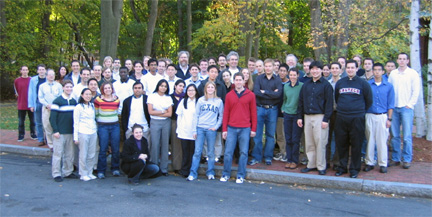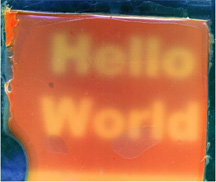|
|
To see all of the parts created by each team, click on their school's logo below.

| 
|
Research Context
If you are a scientist: One direct approach for testing models of biological systems is to design and construct physical instances of systems in accordance with the current models. Differences between expected and observed behavior highlight relevant science that needs doing, or failures in modeling and simulation technology that need fixing.If you are an engineer: Biology can be used as a technology for processing chemicals, energy, information, and materials. However, our ability to engineer biology is now limited. Foundational technologies are needed to help enable the systematic engineering of biology. Past lessons from other engineering disciplines whose relevance to biological engineering is worth exploring include: (i) standardization of components and conditions, (ii) component and device abstraction, and (iii) decoupling of system design from system fabrication.
Educational Context
In teaching the 2003 and 2004 IAP courses and the summer Competition, we have learned how scientists might begin to apply engineering principles to hide the otherwise overwhelming details and intricacy of function found in natural biological systems. We have also observed that engineers best learn about biology by pursuing their natural inclination to design and build. For example, if you want to motivate an engineering undergraduate to learn how proteins bind DNA to regulate gene expression, ask her to design a set of genetically encoded inverters!
Technology Context
The construction of student-designed biological systems is being driven, in part, by improvements in DNA synthesis. For example, the commercial price of synthesis of long fragments of DNA (>500 base pairs) has decreased by a factor of ~2 each of the last three years [Carlson, 2003; Google sponsored links for 'dna synthesis']. More recently, downstream methods have been developed that allow for the rapid assembly of commercial DNA synthesis products into still-longer molecules [e.g., Stemmer et al., 1995; Smith et al. 2003; Kodumal et al. 2004; Tian et al., 2004]. DNA synthesis helps to decouple system design from system fabrication.
We have also begun to make progress on standardization of components via the Registry of Standard Biological Parts and on abstraction via a provisional hierarchy that supports the engineering of many-component integrated genetic systems. Much more work is needed.
(The summer competition was sponsored by a one-time grant from NSF.)

